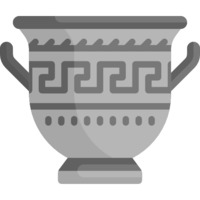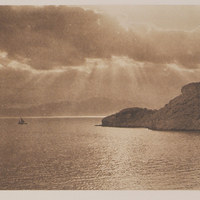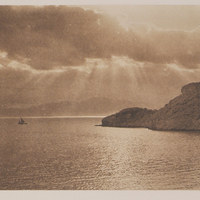Ελεύθερνα
Αντικείμενο
Τίτλος Σημείου Ενδιαφέροντος
el
Ελεύθερνα
en
Eleutherna
Περιγραφή / Απόσπασμα
382-383
en
I ascertained while here, that there are ancient remains near the metókhi Elévtherna, which is less than three miles to the north-east or east of Arkódhi. Now, sup posing the site of Eleutherna to be near this metókhi of the monastery, I was naturally induced to make all possible inquiries to learn the situation of Sybritia.
Σύγχρονη περιγραφή
el
Η αρχαία πόλη Ελεύθερνα είναι χτισμένη επάνω σ’ ένα ψηλό λόφο, ακριβώς εκεί που διασταυρώνονται οι δρόμοι που κάποτε ένωναν τις πόλεις Κυδωνία(Χανιά), Κνωσό και το ιερό στο όρος Ίδη. Σύμφωνα με την παράδοση πήρε το όνομα της από τον Ελευθερέα, έναν από τους Κουρήτες ή από το επίθετο της θεάς Δήμητρας Ελευθούς. Η πόλη, πιθανότατα, ιδρύθηκε από τους Δωριείς περίπου τον 9ο αιώνα π.Χ. και κατοικήθηκε ως και τα πρωτοβυζαντινά χρόνια. Τον 3ο αι. π.Χ. η Ελεύθερνα πολέμησε, στο πλευρό του Μακεδόνα βασιλιά Φιλίππου Ε΄, εναντίον των Ροδίων και των συμμάχων τους Κνωσίων, μετά την πολιορκία, όμως, των αντιπάλων αναγκάστηκε να εγκαταλείψει αυτήν τη συμμαχία. Αργότερα, όταν το νησί καταλήφθηκε από τους Ρωμαίους, η Ελεύθερνα κατάφερε να αντισταθεί για αρκετό καιρό στην πολιορκία τους, λόγω του οχυρού της θέσης της, αλλά τελικά κυριεύτηκε μετά από προδοσία., ενώ κατά τη Βυζαντινή περίοδο αποτέλεσε έδρα Επισκοπής. Ωστόσο, η πόλη οδηγήθηκε σε παρακμή τον 8ο αιώνα μ.Χ., μετά από τις επιδρομές των Αράβων και έναν σεισμό.
Μέχρι στιγμής, στο χώρο, έχουν πραγματοποιηθεί τρεις μεγάλες, συστηματικές ανασκαφές του Πανεπιστημίου της Κρήτης. Στην ανατολική πλευρά του λόφου Πυργί έχουν ανασκαφεί τα λείψανα από ελληνιστικούς αναλημματικούς τοίχους, ερείπια από ρωμαϊκά οικοδομήματα και μια παλαιοχριστιανική βασιλική. Στη θέση όρθια Πέτρα βρέθηκε ένα νεκροταφείο των αρχαϊκών χρόνων και στη θέση Νησί αποκαλύφθηκαν τα ερείπια μίας συνοικίας των ελληνιστικών χρόνων. Όμως, η πιο σημαντική ανακάλυψη της περιοχής, θεωρείται ένα χρυσό αμφίσημο κόσμημα, το οποίο βρέθηκε μέσα σε ένα διπλό τάφο και απεικονίζει μια μέλισσα. Ωστόσο, αν το γυρίσει κάποιος αντίστροφα, τότε η μέλισσα εξαφανίζεται και παίρνει τη θέση της ένας πανέμορφος κρίνος. Πρόκειται για την πρώτη αναπαράσταση της μέλισσας ως θεάς στην Κρήτη.
Η πόλη αποτελεί τον σπουδαιότερο αρχαιολογικό χώρο του νομού Ρεθύμνου, ο οποίος δεν έχει ανασκαφεί ακόμη πλήρως.
Μέχρι στιγμής, στο χώρο, έχουν πραγματοποιηθεί τρεις μεγάλες, συστηματικές ανασκαφές του Πανεπιστημίου της Κρήτης. Στην ανατολική πλευρά του λόφου Πυργί έχουν ανασκαφεί τα λείψανα από ελληνιστικούς αναλημματικούς τοίχους, ερείπια από ρωμαϊκά οικοδομήματα και μια παλαιοχριστιανική βασιλική. Στη θέση όρθια Πέτρα βρέθηκε ένα νεκροταφείο των αρχαϊκών χρόνων και στη θέση Νησί αποκαλύφθηκαν τα ερείπια μίας συνοικίας των ελληνιστικών χρόνων. Όμως, η πιο σημαντική ανακάλυψη της περιοχής, θεωρείται ένα χρυσό αμφίσημο κόσμημα, το οποίο βρέθηκε μέσα σε ένα διπλό τάφο και απεικονίζει μια μέλισσα. Ωστόσο, αν το γυρίσει κάποιος αντίστροφα, τότε η μέλισσα εξαφανίζεται και παίρνει τη θέση της ένας πανέμορφος κρίνος. Πρόκειται για την πρώτη αναπαράσταση της μέλισσας ως θεάς στην Κρήτη.
Η πόλη αποτελεί τον σπουδαιότερο αρχαιολογικό χώρο του νομού Ρεθύμνου, ο οποίος δεν έχει ανασκαφεί ακόμη πλήρως.
en
The ancient city Eleftherna is built upon a high hill, exactly on the point where the roads that used to connect the cities Kydonia (Hania), Knossos and the sanctum at mount Ide, intersected. According to tradition, it took its name from Elefthereas, one of the Kourites or from the adjective used for the goddess Demeter Elefthous. The city was most probably founded by the Dorians around the 9th century BC and it was inhabited up until the first Byzantine years. In the 3rd century BC, Eleftherna fought at the side of the Macedon king Philip 5th, against the Rhodians and their allies the Knossians, however, upon the siege of their adversaries, it had to abandon this alliance. Later on, when the island was taken over by the Romans, Eleftherna managed to resist their siege for quite a long time, due to the fortress of its position, but it was finally conquered after treason, while, in the Byzantine times, it was a seat for the Diocese. However, the city was led to decline in the 8th century AD, upon raids from Arabs and an earthquake.
Up until now, at the area, there have been three major, systematic excavations made from the University of Crete. At the eastern side of the hill Pyrgi, relics from Hellenistic retaining walls, ruins from Roman buildings, as well as an early Christian basilica have been unearthed. At the position Orthia Petra, a cemetery dating from the Archaic Period was discovered and at the position Nisi, the remains of a district of Hellenistic times was also unearthed. However, the most important discovery of the area is considered to be a gold ambiguous ornament, which was found in a double tomb and depicts a bee. However, if one is to turn the ornament upside down, then the bee disappears, and its place is taken by a beautiful lily. It is the first depiction of the bee as a goddess in Crete.
The city is the most important archaeological area of the region of Rethymno, which is not yet fully excavated.
Up until now, at the area, there have been three major, systematic excavations made from the University of Crete. At the eastern side of the hill Pyrgi, relics from Hellenistic retaining walls, ruins from Roman buildings, as well as an early Christian basilica have been unearthed. At the position Orthia Petra, a cemetery dating from the Archaic Period was discovered and at the position Nisi, the remains of a district of Hellenistic times was also unearthed. However, the most important discovery of the area is considered to be a gold ambiguous ornament, which was found in a double tomb and depicts a bee. However, if one is to turn the ornament upside down, then the bee disappears, and its place is taken by a beautiful lily. It is the first depiction of the bee as a goddess in Crete.
The city is the most important archaeological area of the region of Rethymno, which is not yet fully excavated.




